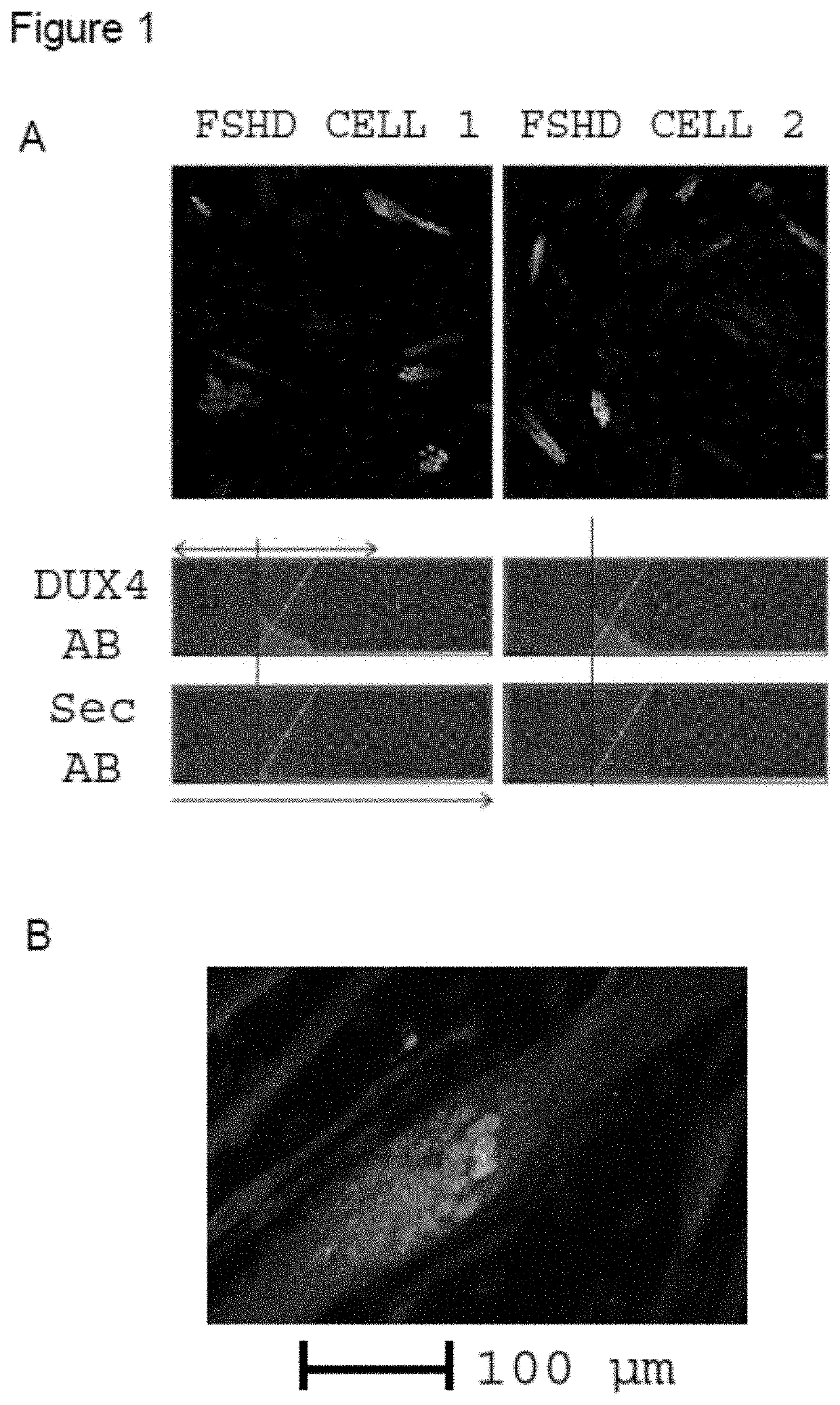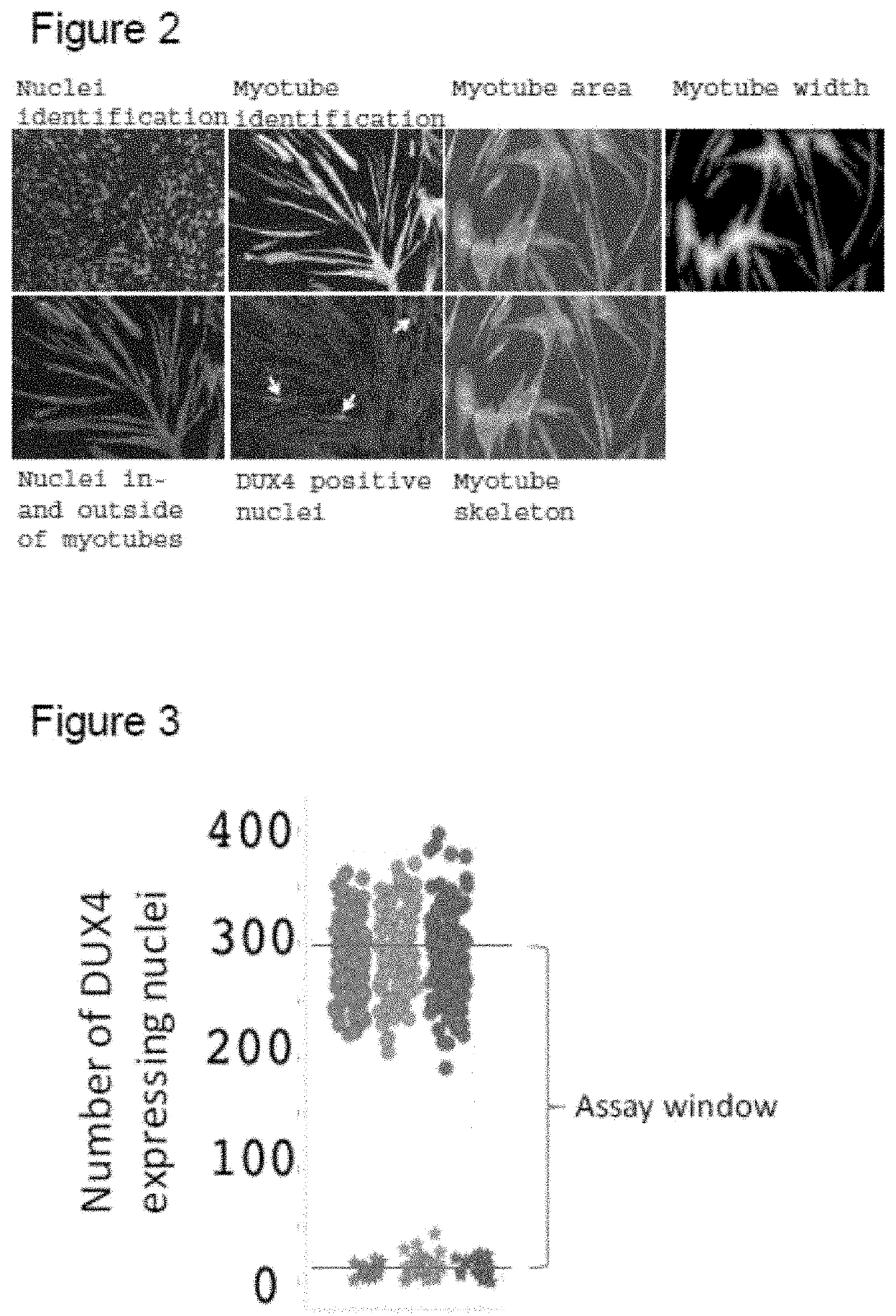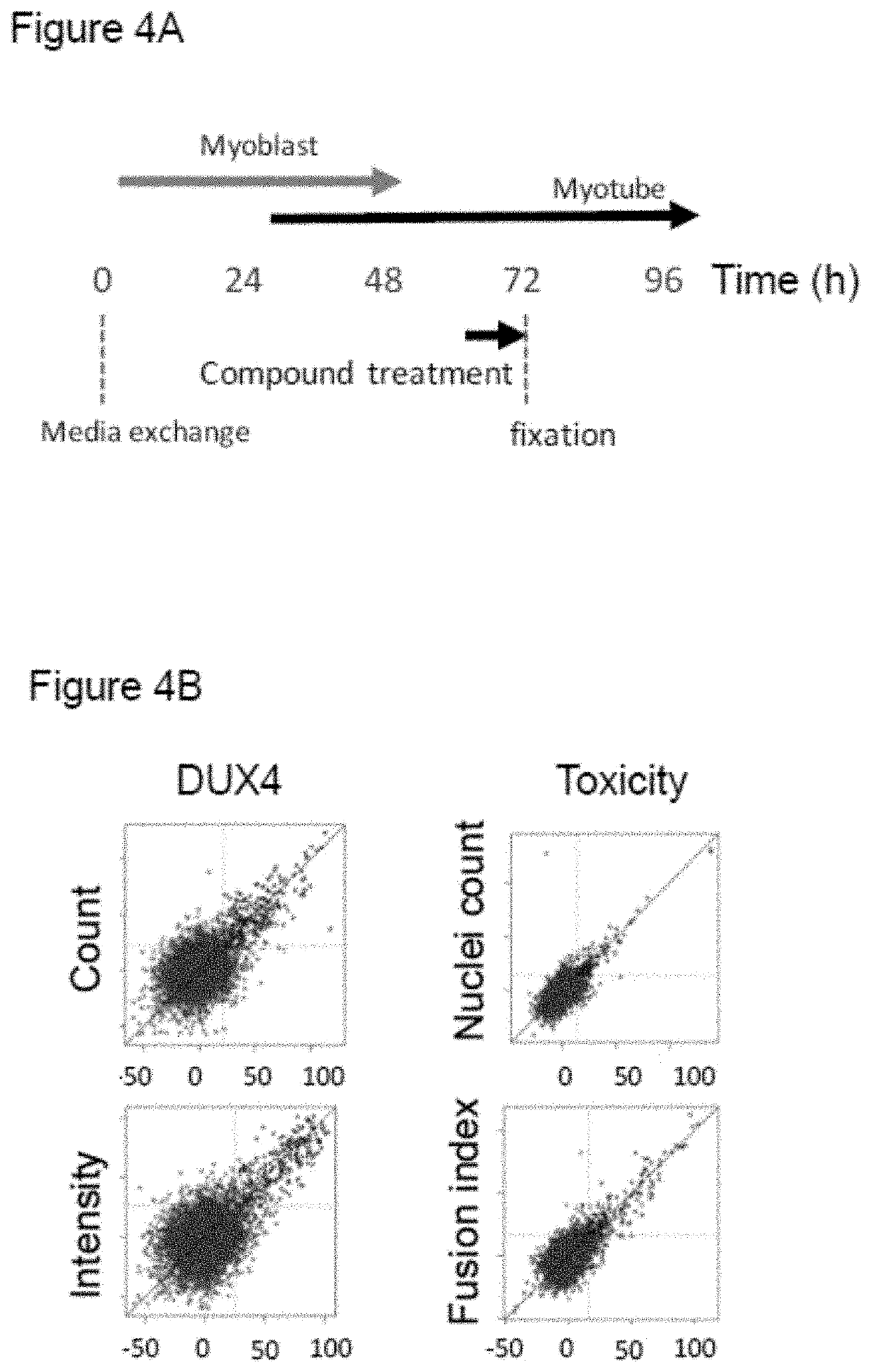Casein kinase 1 inhibitors for use in the treatment of diseases related to dux4 expression such as muscular dystrophy and cancer
a casein kinase and dux4 technology, applied in the field of casein, can solve the problems of reducing the fusion index and a risk of obtaining a false positive readout, and achieve the effect of reducing the expression of dux4
- Summary
- Abstract
- Description
- Claims
- Application Information
AI Technical Summary
Benefits of technology
Problems solved by technology
Method used
Image
Examples
example 1
SHD Muscle Cells Express DUX4 in a Small Fraction of Myonuclei
[0308]The inventors succeeded in establishing a sensitive DUX4 detection method in primary myotubes and used this to build a high-content assay for quantitative assessment of endogenous DUX4 expression. The method was developed into a validated phenotypic screening platform for automated detection and quantification of endogenous DUX4 expression. Mechanisms underlying DUX4 repression may involve many interacting proteins, favouring such a phenotypic approach. Furthermore, it is pathway / target independent (and thus not hypothesis-driven) and provides additional information on cell toxicity or interference with muscle differentiation.
[0309]Significant differences in the levels of DUX4 expression between cells obtained from different donors have been reported. Therefore, muscle cell lines derived from different donors were thoroughly characterised and an optimal cell line was selected for primary screening. MyoD staining of ...
example 2
Assay to Ddentify DUX4 Repression
[0310]A quantitative assay readout was developed based on script-based image analysis. Cells were stained according to example 1, also using DAPI to detect myonuclei and an antibody against myosin heavy chain (MHC) to visualize the formation of myotubes. To analyse the images, an automated script was developed, enabling the detection of nuclei, myotube borders and DUX4 signals, with the script also detecting artefacts to reduce false positive signals. The script enabled multiple validated readouts including the number of DUX4 positive nuclei and nuclei clusters, the fusion index, myotube area, myotube width and myotube skeleton length (see FIG. 2). Additionally, the total nuclei count was included as a measure of cell loss or compound toxicity. The script was validated by evaluating endogenous DUX4 expression in the primary myotubes, and results were in line with literature values, with the number of DUX4 expressing nuclei being <0.5%.
[0311]The assay...
example 3
itors Act as DUX4 Repressors
[0315]The validated assay was used for screening an annotated compound library containing approximately 5000 compounds, to identify novel mechanisms of action for DUX4 repression. This library contained compounds with annotated pharmacology, not only entailing the primary pharmacology of the compounds but also potential known polypharmacology. The primary screening achieved multiple hits, identifying compounds that reduced the number of DUX4 positive nuclei. Hits were further profiled by establishing concentration-response curves. By applying a bioinformatics approach on the screening and profiling dataset, the inventors surprisingly discovered that compounds with a CK1 annotation were significantly enriched in the phenotypically active compound population, i.e. in the group of compounds inducing a repression of DUX4. Interestingly, none of the original compounds with a CK1 annotation had CK1 as its primary pharmacological target, each having other high p...
PUM
| Property | Measurement | Unit |
|---|---|---|
| weight | aaaaa | aaaaa |
| weight | aaaaa | aaaaa |
| temperature | aaaaa | aaaaa |
Abstract
Description
Claims
Application Information
 Login to View More
Login to View More - R&D
- Intellectual Property
- Life Sciences
- Materials
- Tech Scout
- Unparalleled Data Quality
- Higher Quality Content
- 60% Fewer Hallucinations
Browse by: Latest US Patents, China's latest patents, Technical Efficacy Thesaurus, Application Domain, Technology Topic, Popular Technical Reports.
© 2025 PatSnap. All rights reserved.Legal|Privacy policy|Modern Slavery Act Transparency Statement|Sitemap|About US| Contact US: help@patsnap.com



